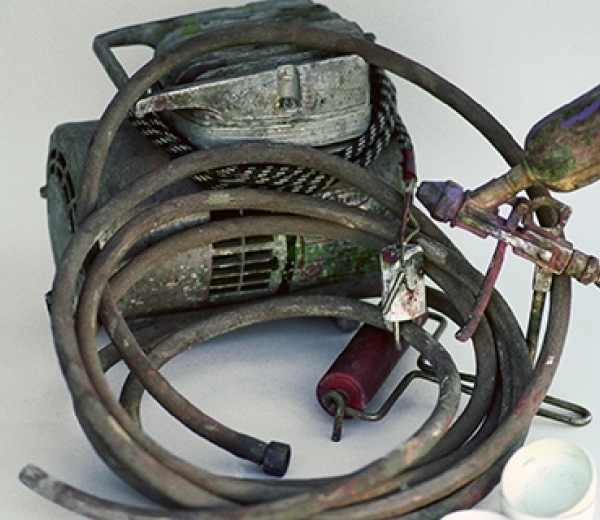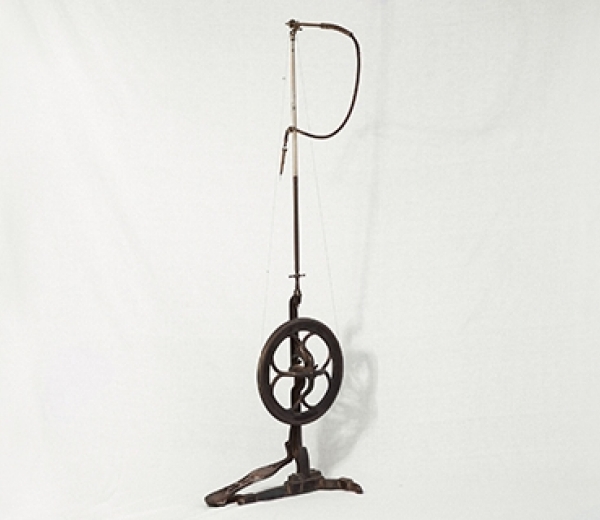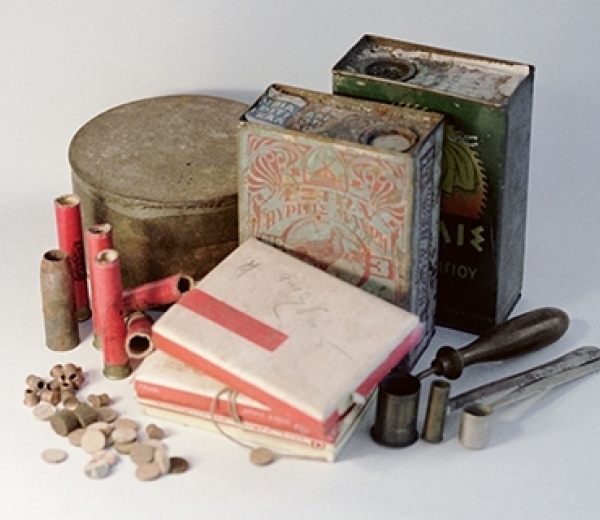Armenoui Kasparian Saraidari
The more I explore the traces of Armenian heritage, the more I realize that these have always been there, engraved deep in my core. This gives me a very powerful connection to my creative work, making me one of the most distinctive alumni of the famous Central Saint Martin’s College in London. My work on the Armenian Genocide and Diaspora has won several prizes and I recently received funding to undertake a Ph.D. as well as gaining a fellowship at the Library of Congress in Washington DC to continue my research.
But my professional achievements are less important than the opportunity to fulfill my dream of creating work that speaks not only for myself, but also tells a story that must not be forgotten. Five members of my family were affected by the Genocide – they either survived it themselves, or they helped others who fled into the safety of the diaspora. I never met them, but by photographing their belongings I was able to tell their stories, and I would like to share that.

Belongings of Sarkis Kasparyan (1912-1970), a painter from Eskisehir in Asia Minor. Photo courtesy of Armenoui Kasparian Saraidari
My grandfather, Sarkis Kasparyan, was a painter. He was born in Eskisehir, Southwestern Turkey, in 1912, and had two older sisters. In 1917 his family was heading west to escape persecution. Sarkis got lost in the crowds at the rail station in Istanbul and his parents heard from a fellow passenger that the Red Cross had collected several youngsters who had been separated from their families. Once the family settled in Larissa, Greece, his mother began to search for Sarkis. The orphanages of Istanbul were arranging tours to Greece to try to bring the children back to their parents; Sarkis was reunited with his family when he was 13. He could not even remember his surname, but his British and Italian teachers at the orphanage had nurtured his talents as a painter and an artist, as well as instilling a love of music and sport. He couldn’t speak Greek fluently, but got a place at the Fine Arts School in Athens.
The outbreak of World War II saw him return to Larissa and take a job in his father’s coffee business.
He married Armenoui Agazaryan but the war forced the business to close. That led Sarkis to seek a living from his artistic skills; he earned a living from painting billboards and cinema adverts and his work was often exhibited. Some of his paintings are still in Larissa’s Municipal Art Gallery. Sarkis died in 1970.

Belongings of Honik Chatzeryan (1893-1969), a goldsmith from Selanic. Photo courtesy of Armenoui Kasparian Saraidari
My uncle, Honik Chatzeryan (1893-1969) was a goldsmith from Selanik (Thessaloniki, Greece). He had four brothers, two of whom moved to France early in the 20th century. His family left Istanbul for Thessaloniki in 1890. Honik was married to Sarkis Kasparyan’s sister, Brilliant, who was also a talented painter.

Belongings of Avedis Agazaryan (1889-1965), a barber from the Adana Province of the Ottoman Empire. Photo courtesy of Armenoui Kasparian Saraidari
Avedis Agazaryan (1889-1965) and his wife Hripsime (1906-1983), were my great grandparents. Avedis was a barber, but he came from the old Armenian Adana Province in the Ottoman Empire. He owned land, including several orange groves around the city of Dörtyol (Chorkmarzban) in Adana province.
When the Genocide came he sent his young wife, Hripsime, to the safety of her family and stayed in the mountains to fight for his Armenian homeland.
In 1918, when the dream of an independent Armenia was shattered, Avedis was forced to head south to Mousouli and Damascus. Finally he made it to Greece via Cyprus and was reunited with Hripsime in Thessaloniki in 1922. Avedis started work as a barber and he and Hripsime had three children: Armenoui, Sarkis and Alice.

Belongings of Zadik Marderosyan (1893-1975), a gunsmith from in Izmir in Asia Minor. Photo courtesy of Armenoui Kasparian Saraidari
Zadik Marderosyan (1893-1975) was a gunsmith who met his wife Digranouhi in their native city of Smyrna (modern Izmir). They had no children of their own and became devoted godparents to the kids of their neighbor, Sarkis Kasparyan, my grandfather. Siranoush, the youngest daughter of Sarkis, was named after Digranouhi’s sister who was lost in the Catastrophe of Smyrna of 1922, in which the city was destroyed.
My family connects many different places in Armenia and the Ottoman Empire, but all came together in Greece where they could escape from danger.

